SECOND YEAR
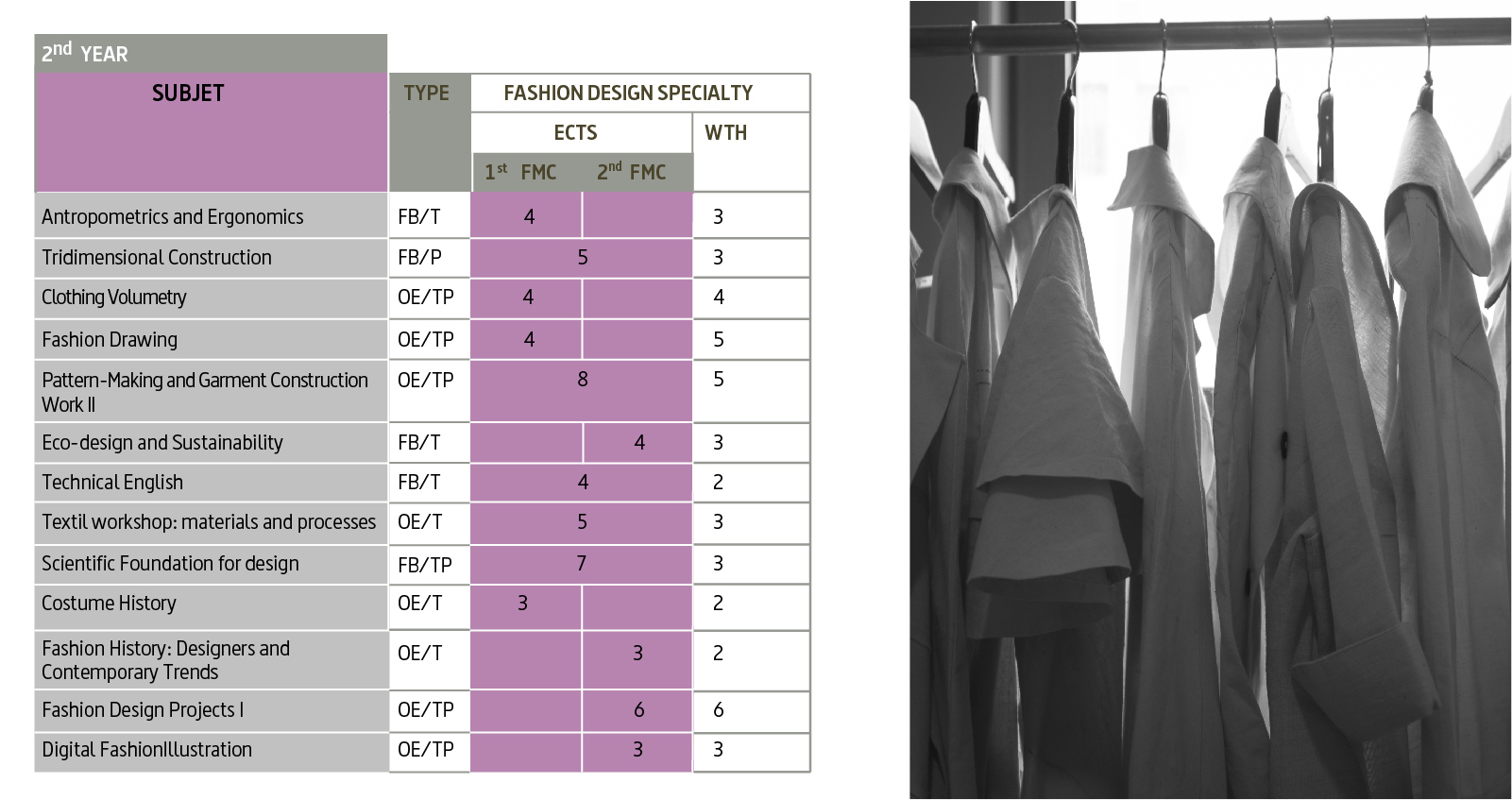
- ANTROPOMETRICS AND ERGONOMICS
- TRIDIMENSIONAL CONSTRUCTION
- CLOTHING VOLUMETRY
- FASHION DRAWING
- SCIENTIFIC FOUNDATION FOR DESIGN
- ECO-DESIGN AND SUSTAINABILITY
- TECHNICAL ENGLISH
- TEXTIL WORKSHOP: MATERIALS AND PROCESSES
- PATTERN-MAKING AND GARMENT CONSTRUCTION WORKSHOP II
- COSTUME HISTORY
- FASHION HISTORY: DESIGNERS AND CONTEMPORARY TRENDS
- FASHION DESIGN PROJECTS I
- DIGITAL FASHION ILLUSTRATION
 ANTROPOMETRICS AND ERGONOMICS 4 credits ECTS / Semestral / 3 hours per week
ANTROPOMETRICS AND ERGONOMICS 4 credits ECTS / Semestral / 3 hours per week
This subject is included in the basic training of fashion design studios andit is necessary for the creative process in a design object.
Ergonomics is a discipline that seeks to adapt the conditions of the work to the human being, in terms of the adaptability of the human body to the work space and the machinery used, seeking comfort, efficiency and safety, thereby improving working conditions.
Ergonomic issues have to be taken into account by the fashion designer when thinking about the success of creations and the psychosocial satisfaction of the end user. The analysis of ergonomics should be an instrument for adapting garments to the body of users, applying the concept of comfort as an added value to the garment or footwear. To achieve the objectives outlined above, we will have anthropometry as an auxiliary science of the efficient use of ergonomics. Result therefore, essential the study of the proportions of the human body, as well as the knowledge of the diversity of sizes of garments and elements of fashion design.
Likewise, it is pertinent to include bionics in the syllabus of the subject, as a discipline that studies living organisms and natural systems in order to look for possible applications to human activities. Its application to Fashion Design is undeniable. Bionics teaches us the parallelism between movements, structures and studies of forms, where nature is once again the teacher.
 TRIDIMENSIONAL CONSTRUCTION 5 credits ECTS / Annual / 3 hours per week
TRIDIMENSIONAL CONSTRUCTION 5 credits ECTS / Annual / 3 hours per week
The subject of three-dimensional construction is a subject of basic training that is taught in the second year of the Superior Artistic Teachings of Fashion Design. It has 5 ETCS credits and a total of 125 hours that are taught in 3 hours per week.This subject, together with the rest that form the subjects of “languages and techniques of representation and communication”, constitutes a basic and preparatory subject for the rest of the specialty curriculum.
The basic contents that are addressed are:
Analysis of the three-dimensional shape: Analysis of works or three-dimensional objects.
The process of artistic abstraction: synthesis, geometrization and stylization as a solution to plastic proposals.
Construction and valuation of the volumetric form: the process of design and creation of three-dimensional shapes.
- From the sketch to the definitive work.
- Techniques and materials of three-dimensional construction: flexible, rigid, laminable, modelable materials.
- Analysis of the qualities of surface materials.
- Manufacture and use of textures.
- Realization of molds and simple castings.
- Construction of models.
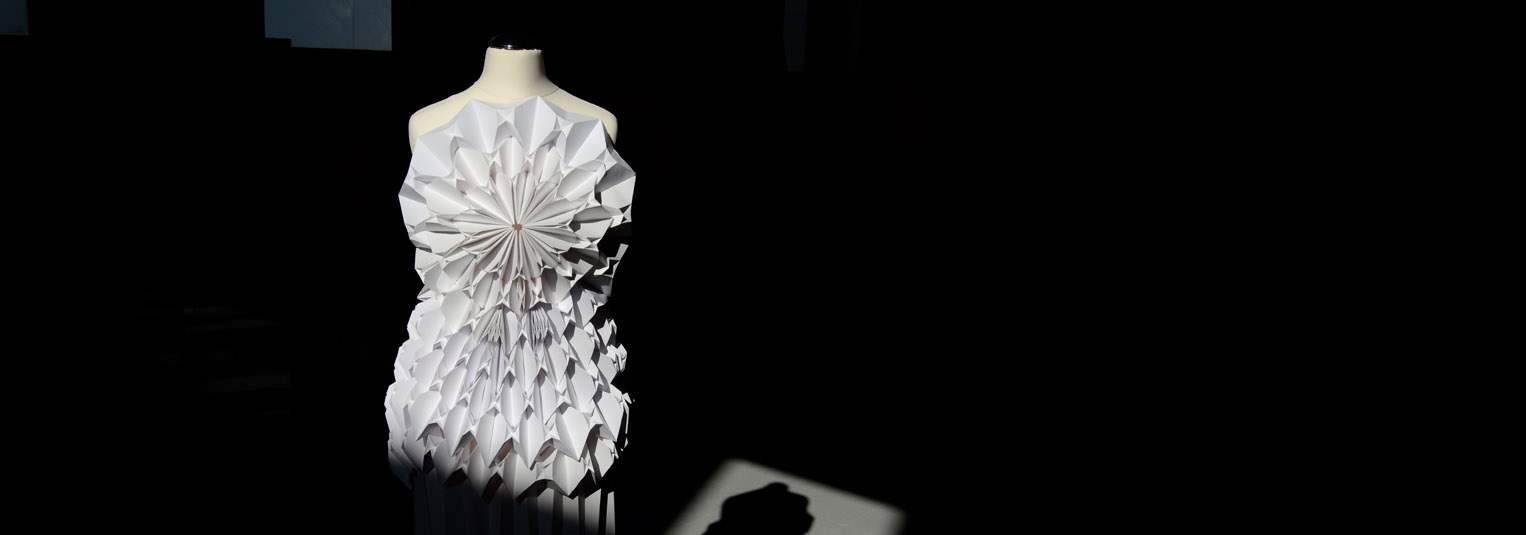 CLOTHING VOLUMETRY 4 credits ECTS / Semestral / 4 hours per week
CLOTHING VOLUMETRY 4 credits ECTS / Semestral / 4 hours per week
The subject of Clothing Volumetry belongs to the subject of the Languages and Techniques of Representation and Communication and volumetric aspects related to clothing are developed, being a complement to the subject of three-dimensional construction.
Clothing and the artistic object are increasingly related to the fashion scene. Sculptural and spatial languages, concepts, processes and sculptural techniques are used in fashion design in a constant way. Without these resources fashion cannot be understood.
The human body is a configurator of volume and in this sense, it is used as a modifier of clothing, in the same way that clothing modifies the body.
This link must be used in the creative and design process.
 FASHION DRAWING 4 credits ECTS / Semestral / 5 hours per week
FASHION DRAWING 4 credits ECTS / Semestral / 5 hours per week
The subject of drawing of fashion is mandatory in the specialty of fashion design and has a total of 4 credits that will be taught in the first semester. The total weekly teaching hours will be 5.
Design is called drawings that illustrate ideas and concepts in a design project. Fashion designers use drawing as an essential part of the creative process to express their ideas, shapes, colors, fabrics and materials. This type of drawing is a fundamental pillar of fashion design and the expressive skill it implies is essential.
The drawing of the human figure, its proportions, anatomy and poses adapted to the fashion figurine, are the basis for developing the design of the garments. Also research and study of the representation of fashion objects made by fashion designers and illustrators will bring students closer to this artistic manifestation.
This subject requires the student to develop the ability to draw their own fashion figurines at a formal, functional and symbolic level.
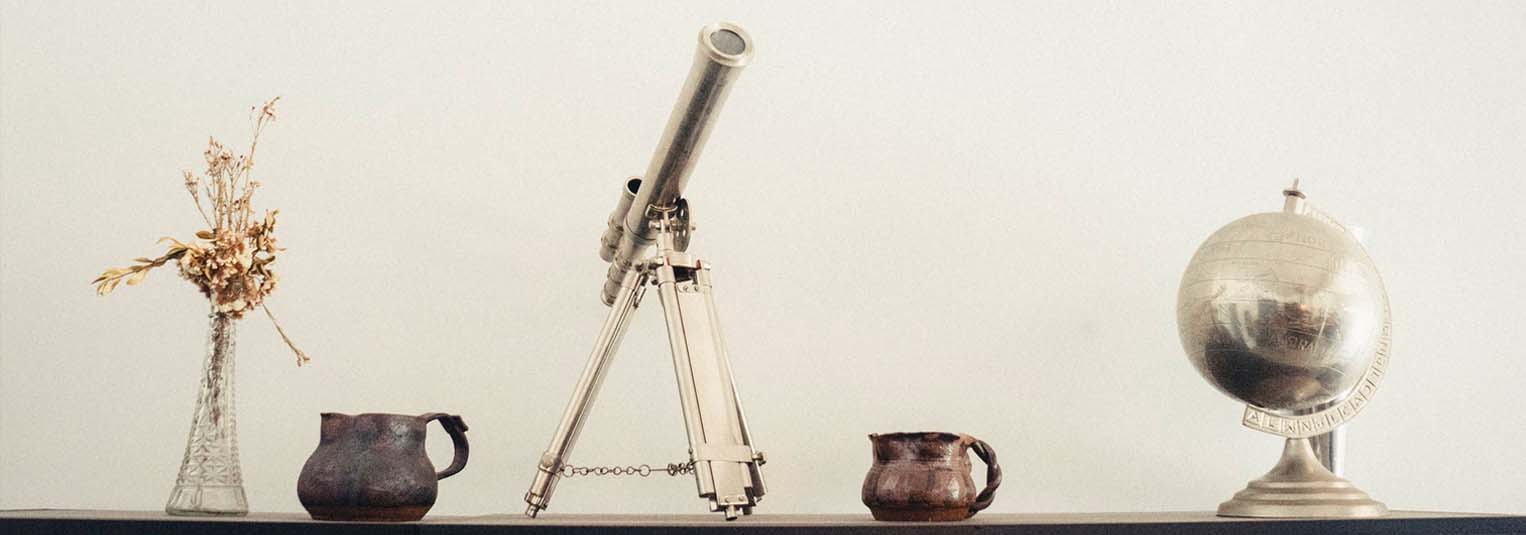 SCIENTIFIC FOUNDATION FOR DESIGN 7 credits ECTS / Annual / 3 hours per week
SCIENTIFIC FOUNDATION FOR DESIGN 7 credits ECTS / Annual / 3 hours per week
The subject aims to provide students with a basic scientific training and promote the acquisition of mathematical skills and interaction with the physical and natural environment that can be applied in their training and subsequent professional performance; besides introducing a scientific research methodology in the field of Fashion Design. For this, activities and application exercises with related examples will be developed.
The subject is theoretical and practical and will focus on the applications of Mathematics, Physics and Chemistry applied to design. Its objective is to train students who are capable of understanding scientific texts related to their sector and who know the scientific-technological base that supports the advances of Fashion Design (new fabrics and fibers, research in textile laboratories, etc.).
It is intended that at the end of the course students will be aware that in today’s society design is conditioned by scientific advances and therefore is directly related to science.
 ECO-DESIGN AND SUSTAINABILITY 4 credits ECTS / Semestral / 3 hours per week
ECO-DESIGN AND SUSTAINABILITY 4 credits ECTS / Semestral / 3 hours per week
The subject Eco-design and Sustainability conforms with the subject “Scientific fundamentals applied to design” of the second year the subject of Applied Science to Design in the title of Fashion Design.
The subject will be approached considering the ethical aspects that concern the activity of fashion design, in relation to care and respect for the environment, the planet, the different societies and cultures, and the individual in particular. Likewise, special attention will be paid to the respect for fauna and flora, and the appropriate patterns of human behavior will be taken into account in the wheel of consumption.
Self-learning by students when gathering information and resources appropriate for the performance of the subject will be considered essential for overcoming it, in order to achieve autonomy
 TECHNICAL ENGLISH 4 credits ECTS / Annual / 2 hours per week
TECHNICAL ENGLISH 4 credits ECTS / Annual / 2 hours per week
The purpose of this subject is to provide the student with resources that allow him or her to develop in English in a specific context, the technical-commercial field and within the professional design field in which they will have to perform at the end of their academic studies. These technical-commercial English classes are two hours per week. Theoretical classes will be taught but to a greater extent they will be practical classes. Four skills will be worked on: Reading, Listening, Writing and Conversation.
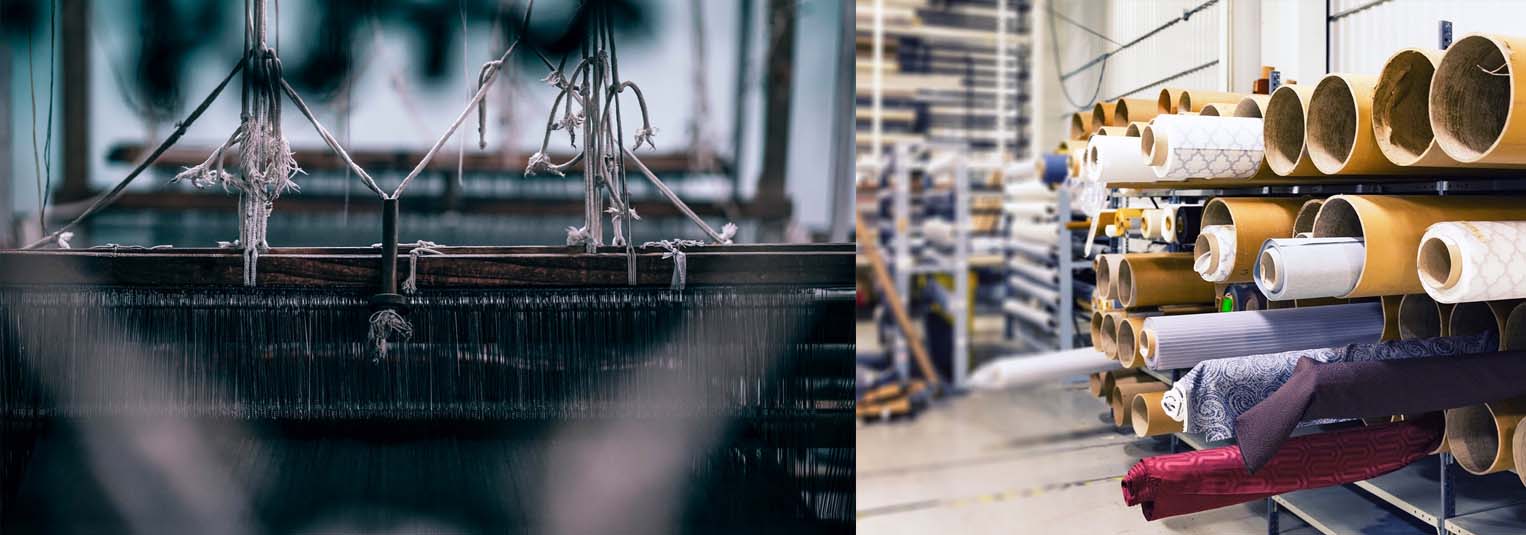 TEXTIL WORKSHOP: MATERIALS AND PROCESSES 5 credits ECTS / Annual / 3 hours per week
TEXTIL WORKSHOP: MATERIALS AND PROCESSES 5 credits ECTS / Annual / 3 hours per week
This subject is considered as a practical immersion in a textile workshop. It is an introduction and a first contact with the knowledge of the materials of the textile workshop (fibers, dyes), to practice the use of the tools and machineries of a manual textile workshop. Being an eminently practical subject, it will be possible to strengthen research and experimentation on the part of the students.
This subject is of annual character, of 5 ECTS, with a teaching load of 5 weekly hours.
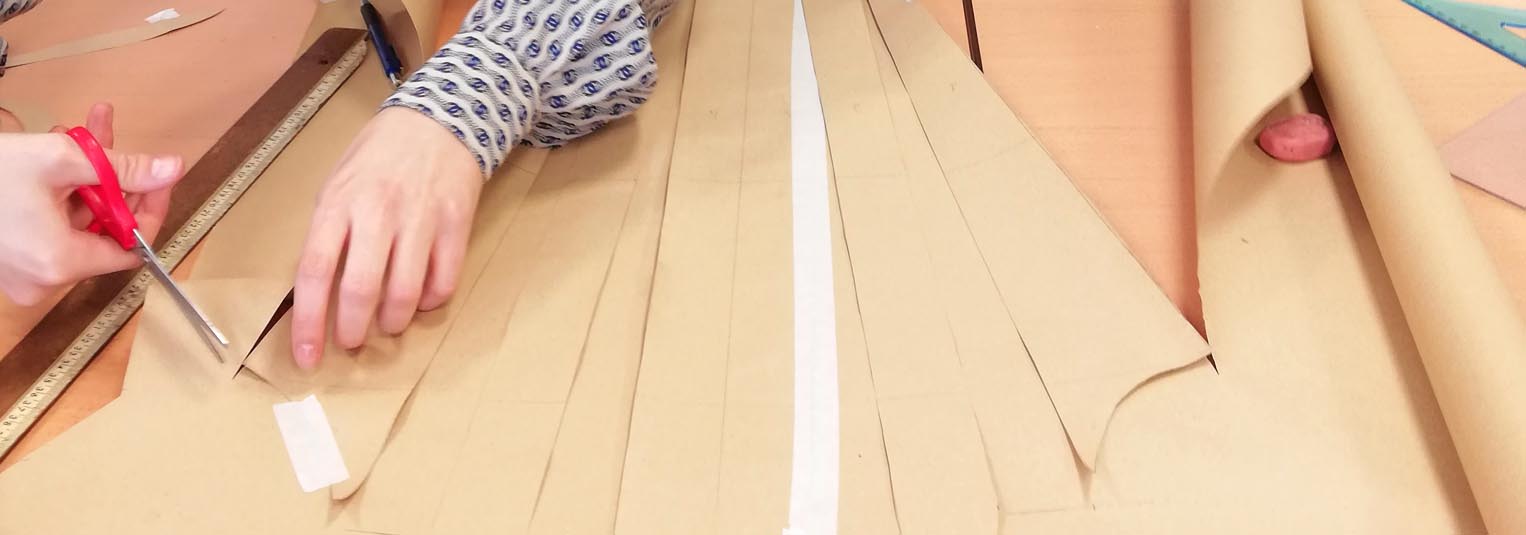 PATTERN-MAKING AND GARMENT CONSTRUCTION WORKSHOP II 8 credits ECTS / Annual / 5 hours per week
PATTERN-MAKING AND GARMENT CONSTRUCTION WORKSHOP II 8 credits ECTS / Annual / 5 hours per week
The Pattern and Dressmaking II subject is an annual subject. It is situated in the second year of studies and is a compulsory subject of the specialty of fashion design. It has 8 ECTS and 5 hours per week. It is a subject that is part of the patronage and confectionery material, already started in the first course with the subject of patronage and confectionery workshop I and that will be completed in later courses with subjects of a similar nature.
In this subject, patronage is deepened through the study of transformations. The degree of complexity in the confection rises. The designs and ideas of the students are taken to reality. In this subject, we will always be looking for perfection in the quality of the product.
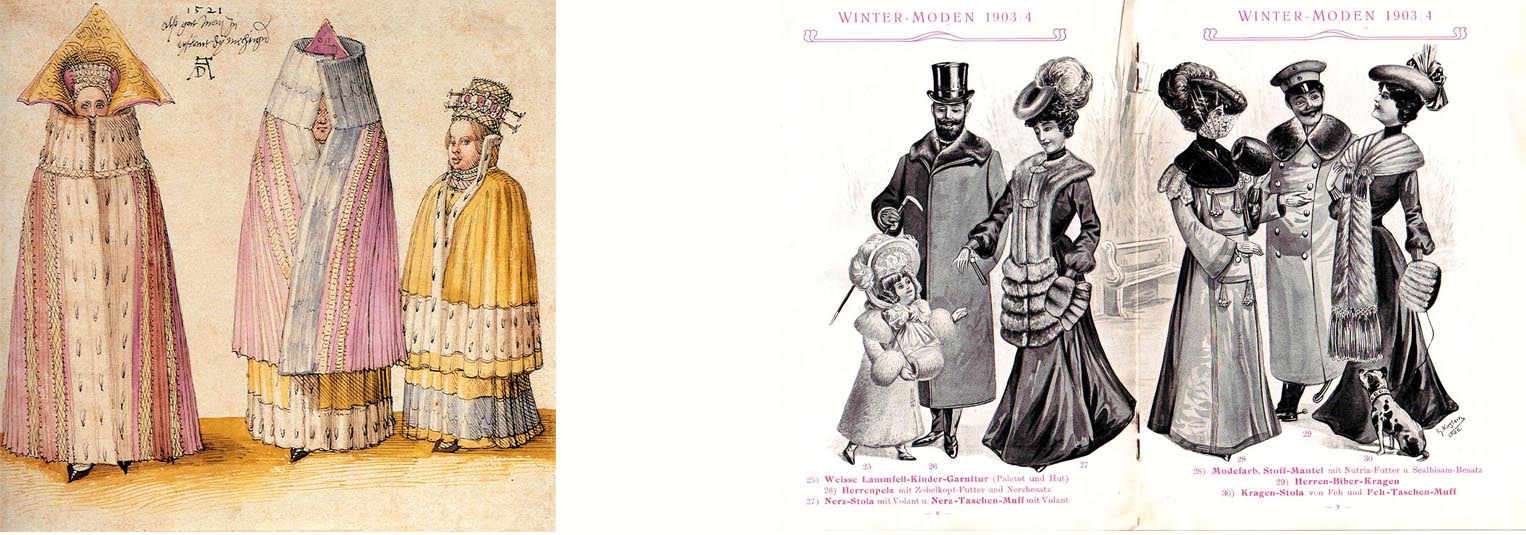 COSTUME HISTORY 3 credits ECTS / Semestral / 2 hours per week
COSTUME HISTORY 3 credits ECTS / Semestral / 2 hours per week
This subject, through the exploration of the historiographical sources and the evolution of the forms of the costume, deals with a broad and complete panorama that ranges from the rough prehistoric clothing to the studied harmony of the ancient costume or from the austere attire of the Age Average to the refined and full of fantasy fashions of modern times. The aim is to provide the student with the knowledge of the historical evolution of the clothing, relating it to the basic aesthetic lines of its cultural context and reaching a full knowledge of the motivations to be created. The subject is considered as the link that unites the student with the past and present reality, with the values of the different stages, thus promoting their own personal and social evolution. It should allow you to recognize and remember a series of historical and aesthetic references, materials and documentaries that are useful in the development of your future work as design professionals
 FASHION HISTORY: DESIGNERS AND CONTEMPORARY TRENDS 3 credits ECTS / Semestral / 2 hours per week
FASHION HISTORY: DESIGNERS AND CONTEMPORARY TRENDS 3 credits ECTS / Semestral / 2 hours per week
This subject analyzes through the exploration of the historiographical and documentary sources the evolution of the forms of the dressing, approaching a wide and complete panorama that includes the clothes throughout the 19th century, the creation of the Fashion houses. Also analyzes the development of the same and the designers and trends in the twentieth century.
During the course, it is intended to provide students with knowledge of the historical evolution of clothing, relating it to the basic aesthetic lines of their cultural context and reaching a full knowledge of their motivations to be created.
The subject is considered as the link that unites the student with the past and present reality, with the values of the different stages, thus promoting their own personal and social evolution.
It should allow you to know, assimilate and remember a series of historical, aesthetic, material and documentary references that are useful in the development of your future work as design professionals.
 FASHION DESIGN PROJECTS I 6 credits ECTS / Semestral / 6 hours per week
FASHION DESIGN PROJECTS I 6 credits ECTS / Semestral / 6 hours per week
The subject of Fashion Design Projects I is a subject developed in the second semester of the second year of the studies of Fashion Design and is a compulsory subject of the specialty. It has 6 ECTS credits and is taught in six hours per week.
The aim of the subject is to introduce the students to the basic aspects of the development of Fashion Design projects through the realization of practical cases in which the students know the different parts of the process, the methodology, creative strategies and research of ideas, approaching different solutions to the design problems presented through a project methodology. The contents are mainly directed to the development of fashion projects for different brands, developing the technical, functional and communicative aspects of the project.
With the development of this subject, students will learn to Design, developing the skills and abilities to solve aesthetic, functional, technical and realization problems that arise during the development and execution of fashion design projects.
It will also address aspects related to fashion sociology, the study of trends and the figure of cool-hunter.
 DIGITAL FASHION ILLUSTRATION 3 credits ECTS / Semestral / 3 hours per week
DIGITAL FASHION ILLUSTRATION 3 credits ECTS / Semestral / 3 hours per week
The subject Digital illustration of Fashionis part of the subject Projects of Fashion design and clothing. This subject belongs to the second course of the Superior Studies of Fashion Design. It is compulsory of specialty and has a total of 3 credits that will be taught in the second semester.
In this subject we will be deepened in the graphic digital resources oriented to the design, in which diverse applications includes, the generation of textile designs and also the creation of figurines.
The use of these technologies is enhanced, as techniques applied to the creative and productive processes, as well as an instrument of communication and management. The use of different professional programs is essential for the realization and interpretation of fashion projects and the treatment and presentation of them in a manner appropriate to current times, thus completing the training of the future professional.
The basic contents of the subject are related to:
- The basic elements of visual communication.
- Visual techniques as communication strategies.
- Digital illustration techniques: vector drawing and bitmap applied to fashion design and illustration (image creation, retouching, digital coloring and mixed media).
- The creation of color charts.
- The methods of investigation and experimentation proper to the subject.
